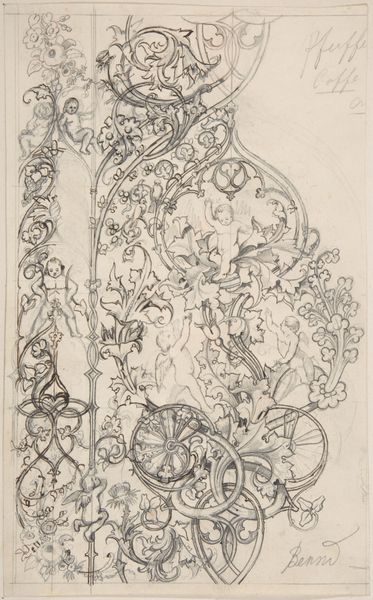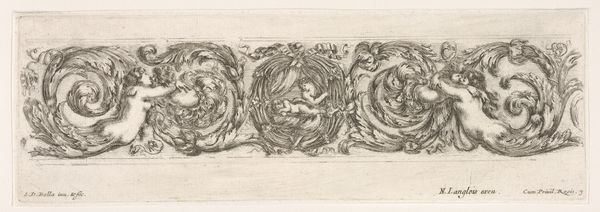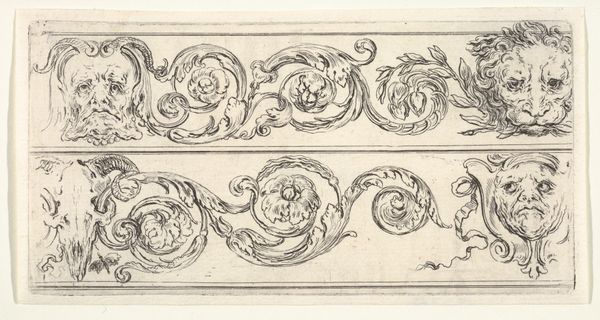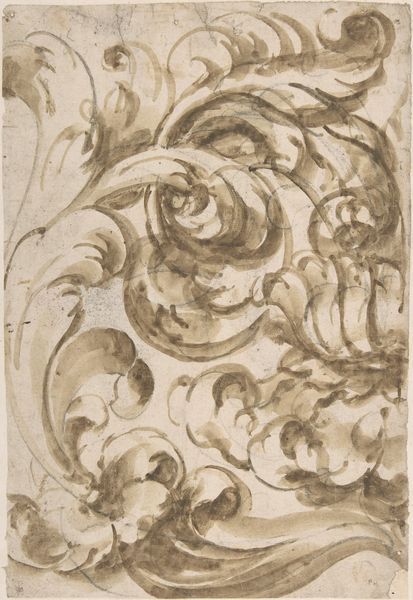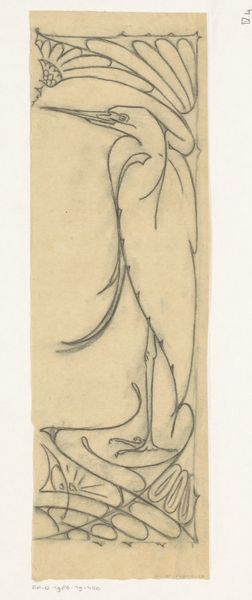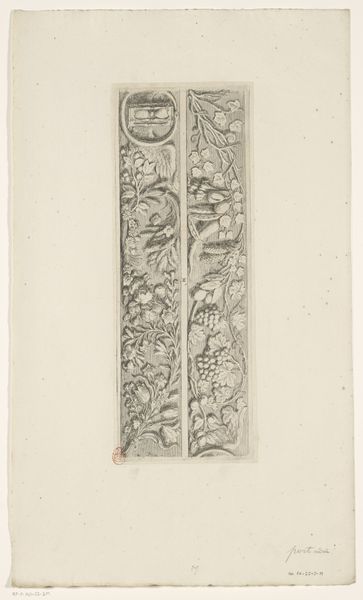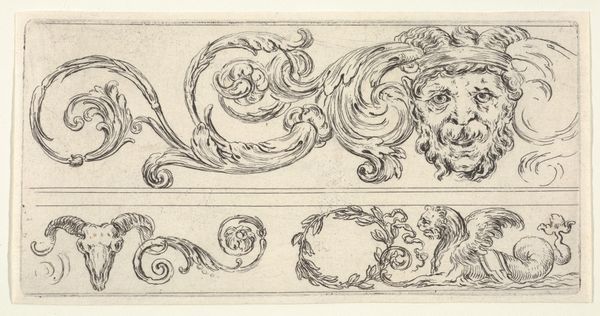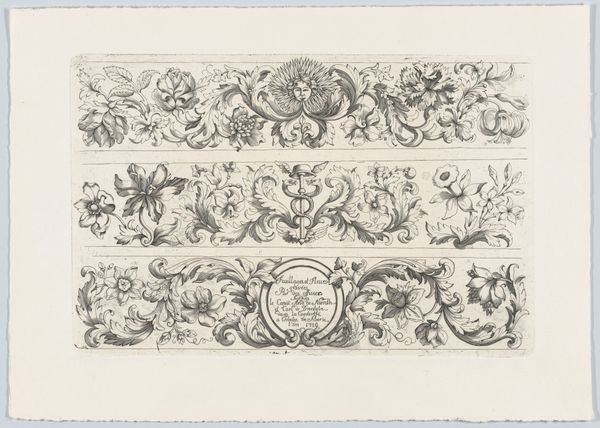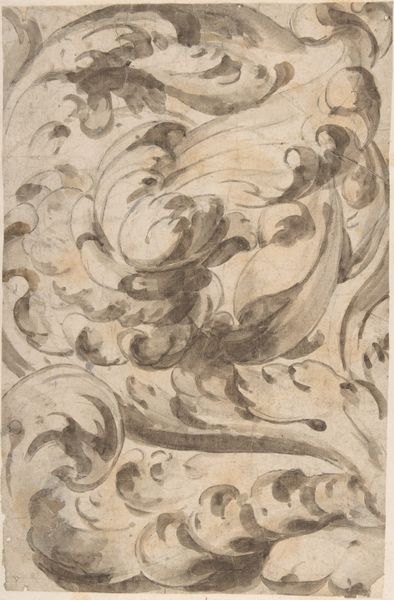
Two designs for decorative borders in strapwork and rinceaux 1830 - 1897
0:00
0:00
drawing
#
drawing
#
form
#
line
#
academic-art
#
decorative-art
Dimensions: Overall: 13 3/8 x 19 3/8 in. (34 x 49.2 cm)
Copyright: Public Domain
Curator: Here we have two decorative border designs rendered in drawing, conceived by Jules-Edmond-Charles Lachaise some time between 1830 and 1897. What's your first reaction? Editor: My immediate thought is "opulence." The intricacy and density of the swirling patterns suggest a desire to adorn spaces lavishly. Curator: Indeed. Lachaise demonstrates command over line and form. Observe how the "strapwork and rinceaux" motif blends geometric rigor with naturalistic tendrils. What do you make of that? Editor: It feels symptomatic of its time. This blend served the aesthetics of power. Ornamental flourishes are rarely politically neutral; they underscore social stratification and exclusivity. Who got to live with such refined designs, and who toiled to produce or maintain them? Curator: A fair point. However, formalism pushes us to initially appreciate this as the interplay of positive and negative space, or consider how the eye moves across the page guided by the calligraphic variations. We shouldn't neglect how effectively the piece works visually. Editor: I agree it functions well aesthetically. But even aesthetic appreciation is coded. The "beauty" we recognize often reinforces dominant cultural values. A deconstruction of its original context encourages us to query whose sense of beauty is centered. Curator: Certainly, context adds valuable dimensions, even as we assess the artistry in generating sophisticated designs with balanced asymmetries and elegant detail. It encourages curiosity about the visual and emotional impact desired by both the artist and client. Editor: Exactly, understanding its origins exposes these works less as innocent designs and more as echoes of social ambitions from a particular time. Ornamentation wasn't merely aesthetic; it declared status. Curator: I find it fascinating how something that appears straightforwardly decorative yields such layered perspectives upon closer study. It illustrates how styles function on both superficial and deeply contextual levels. Editor: Right. This piece reminds me that all art carries its own loaded historical moment—even designs conceived, on the surface, only to look “pretty." They actively built worlds, physically and socially.
Comments
No comments
Be the first to comment and join the conversation on the ultimate creative platform.


